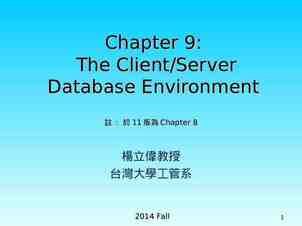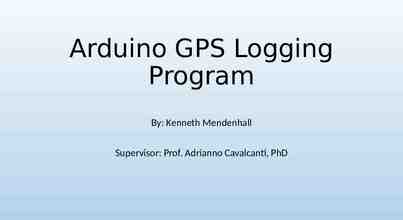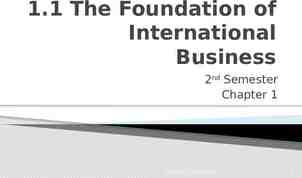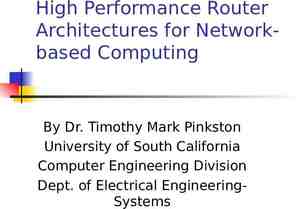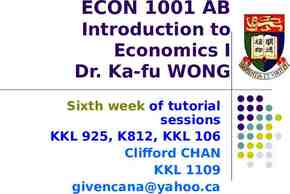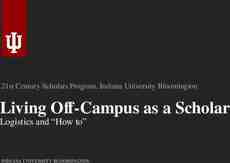Promoting Effective Teaching, Learning & Assessment January 18, 2018
53 Slides5.33 MB

Promoting Effective Teaching, Learning & Assessment January 18, 2018 Lisa Gloss, Kimberly Green, Anna Plemons, Rebecca Vandevord

Roles and Responsibilities Supervise the delivery and assessment of the department’s curriculum. Plan for both short- and long-term curricular needs. Work with the dean’s office to resolve enrollment management issues. Oversee the design, implementation, and use of assessment of student learning in the department’s degree programs to support high quality education and student achievement.

Roles and Responsibilities Make teaching assignments for faculty and graduate students. Teaching loads need not be identical across faculty members. Instead, loads should be: – Consistent with agreed upon performance expectations for individual faculty members. – In the best interests of the department. https://provost.wsu.edu/procedures/chairs-di rectors/duties-and-responsibilities /

What’s your biggest challenge related to teaching, learning and assessment? The greatest resource? What support do faculty need?

Promoting Effective Teaching Workshop The Special Case of Graduate Students: The Dual Role of Student and Teacher Lisa Gloss, Graduate School Dean

Graduate Students are: Students Adapting to new expectations Teachers Learning to be “on the other side of the lectern”

I. Graduate Students as Students Think, pair, share: What are the biggest differences between expectations for UG and 1st year grad students? How do your course offerings differ between UG and Grad? Do you have conjoint First year student orientation courses?

I. Graduate students as students First semester sticker shock Fresh from undergraduate or returning from “life” Area for innovation in teaching Develop curriculum that models Ph.D. behavior and approaches to learning & research Problem of diverse clientele Establish culture of communication with faculty

II. Graduate students as teachers Important skill to demonstrate in job market Not just doing, but grasp of pedagogical theory Approach teaching as professional development TA’s tend to be receptive to innovation, but they will need help and encouragement.

II. Graduate Students as Teachers Think, pair, share: How do you prepare your graduate students to stand on the other side of the lectern? What resources are available to students in a teaching role?

Comments and Questions

Promoting Effective Teaching: Syllabus Design and Student Retention Presented by / Anna Plemons, PhD Critical Literacies Achievement and Success Program Washington State University

Goals for today’s session 1. Introduce CLASP as a resource for department chairs and program directors 2. Share data from the CLASP FA17 Syllabus Study

What is CLASP? CLASP addresses the retention and degree completion rates of firstgeneration, multicultural, low-income, or otherwise underrepresented students in three distinct ways: - Equips students with the confidence and competence needed to interpret and navigate the unspoken expectations of the university. - Supports faculty who teach key introductory courses with professional development opportunities that examine the connection between pedagogy and retention of underrepresented students. - Bridges connections between student affairs programs and academic departments to facilitate a holistic approach to student learning and development.

Two dangers in talking about underrepresented students: 1. Use stereotypes that hyper-define and/or over-determine differences between individuals or groups 2. Sanitize differences so that real and concrete challenges are muted and/or made invisible

CLASP Departmental Collaborations 1. English—6-session series in Professional Development Certificate program 2. Psychology—3-session series in PSYCH 505 with new PSYCH 105 instructors

Faculty Development Workshop: Three Principles 1. Make the rules explicit whenever and wherever possible 2. Diffuse effects of stereotype threat with environmental cues 3. Encourage a malleable view of intelligence

Stereotype Threat The threat of being viewed through the lens of a negative stereotype Fear of doing something that will inadvertently confirm a stereotype Linked to diminished performance based on the associative psychological stress From Steele, C. (1999). Thin Ice. Atlantic Monthly. 282(2).

The Data The more the student cares about their performance, the more acute stereotype threat’s negative impact. The Effects of Stereotype Threat on the Standardized Test Performance of College Students (adjusted for group differences on SAT), From J. Aronson, C.M. Steele, M.F. Salinas, M.J. Lustina - Readings About the Social Animal, 8th edition, E. Aronson

Stereotype Threat, cont. Reduction in stereotype threat supports an open, relaxed posture for learning and improves academic performance. Photo credit: Funky Larry Jones

Psych 105 Syllabus Revision 1. 2. 3. 4. Visual appeal Learner-centered Clear grading criteria Easy-to-read schedule 5. Virtual office hours (before exams)

Faculty Development Workshop revisited 1. Make the rules explicit whenever and wherever possible 2. Diffuse effects of stereotype threat with environmental cues 3. Encourage a malleable view of intelligence

Question 3) This document helps me understand the instructor's expectations for students. Monomodal (Syllabus 1.0) Averag e: 4.38 Multimodal (Syllabus 2.0) Averag e: 4.52

Question 4) This document clearly describes what students can expect from the instructor. Monomodal (Syllabus 1.0) Averag e: 4.17 Multimodal (Syllabus 2.0) Averag e: 4.45

Question 6) This document guides me to the information I would need to be successful in this course. Monomodal (Syllabus 1.0) Multimodal (Syllabus 2.0) Averag e: 4.16 Averag e: 4.34

Question 7) This instructor seems approachable. Monomodal (Syllabus 1.0) Averag e: 3.7 Multimodal (Syllabus 2.0) Averag e: 4.23

Question 8) This document conveys the instructor's commitments to uphold principles of diversity and inclusion. Monomodal (Syllabus 1.0) Averag e: 4.01 Multimodal (Syllabus 2.0) Averag e: 4.22

Final Thoughts 1. There is a direct connection between pedagogy and retention 2. These processes need to be adapted to local contexts 3. CLASP is committed to increasing student retention and faculty efficiency (which do not need to be in conflict—ex: PSYCH 105 virtual office hours)

CLASP workshops can be adapted for specific departmental contexts [email protected] clasp.wsu.edu

WSU Academic Outreach and Innovation Dr. Rebecca Van de Vord, Assistant Vice President Director, Learning Innovations

Knowledge test 1. What does AOI stand for? 2. Who/what is AOI a) New name for Global Campus/WSU Online b) New name for AMS c) Conglomeration of AMS, Global Campus and Summer session d) I have no idea

Knowledge test continued What do we do? a) Support faculty in the delivery online courses b) Support faculty in the delivery of video conference courses c) Provide on-site support for classrooms and The Spark d) All of the above e) No idea

AOI Academic Outreach & Innovation Learn365 Summer Session Intersession Winter Session Global Campus Academic Technology Professional Education Online Degrees Learning Innovations Conference Management Global Connections -Trainings -Workshops -Instructional Design -Technology Test Kitchen Media Development & Delivery GUC & The Spark Videoconference Courses and Events Summer Advantage Calculated Success Continuing Education Courses & Certificates (Online and Face to Face)

AOI Learning Innovations Our mission–academic technology - foster innovation - increase access to education and student success Support all faculty, all campuses All things related to academic technology – Classroom, Online, Videoconference, video/lecture capture, student engagement, collaboration, etc.

Who we are Pedagogy Technology Learning Innovations

What? Panopto – Lecture Capture Blackboard Learn - LMS Blackboard Collaborate Ultra - WebConferencing VideoConferencing (AMS) General University Classrooms Global Campus (including instructional design, media creation, student support for online courses) Teaching innovation w/ AcademicTechnology – Bryan 404 Active Learning Classrooms – The Spark (faculty innovation lab/technology test kitchen) – Recording Studios/Lightboard – Open Educational Resources, adoption/customization/creation

HOW Face to Face and virtual training sessions Tailor, individualize, – – – – Open labs (Van Doren rm 3) 1:1 in office support (Bb Specialists) Training on demand Training request form online Faculty-led peers as experts – Faculty–led workshops – Fall Academic Technology Forum – Spring Teaching Innovation Day Global Campus courses– 100% Online – Excellence in Online Teaching Course – Online orientation for first time Global Campus instructors Academic Tech Community and Resources space Teaching Listserv – weekly tips, workshop announcements, etc.

Contact us Spring training schedule handout [email protected] https://li.wsu.edu (brand new website!) Rebecca Van de Vord, [email protected]

Assessment of Student Learning: Faculty Promoting Effective Curriculum and Instruction Provost’s Session for Chairs and Directors, January 2018 Office of Assessment of Teaching and Learning

Learning Effective assessment contributes to WSU’s educational quality and to student achievement

Program-level Assessment of Learning: Shifts Thinking from My Course to Our Curriculum Classroom assessment involves assessment of the individual student, typically done by the course instructor Program assessment involves the assessment of students as a group, done by department faculty Faculty can use program assessment to help maintain an effective curriculum that promotes student learning and meets evolving needs over time Departments/Schools use program assessment to inform decisions about curriculum, instruction, advising, policies, facilities, TA training, etc. 41

Cycle to Assess Student Learning in the Currriculum Student Learning Outcomes & Assessment Questions Results Inform Decisions (e.g. curriculum, instruction & more) (Curriculum Map) Faculty Discuss and Interpret Results Analyze Evidence and Summarize Results Identify Learning Opportunities in the Curriculum Select Assessment Measures to Gather Evidence Gather Student Learning Evidence (e.g. collect & evaluate student work) Spring 2017 History Undergraduate Program Assessment Selected Results – For Internal Use 42

WSU: Key Assessment Elements Undergraduate Degree Programs Key Elements in Place 2016 2017 # of Reports % of Reports # of Degrees % of Degrees 60 100% 63 100% 58 97% 60 95% 58 97% 61 97% 60 100% 62 98% 59 98% 60 95% Use of Assessment 60 100% 62 98% All Six Elements Total Number 57 95% 57 90% 60 100% 63 43 100% Student Learning Outcomes Curriculum Map Direct Measure Indirect Measure Assessment Plan

Direct Measures: Student Work Direct measures: A measure of student’s performance or work product that demonstrates target skills and knowledge. Paper Research project Poster Oral presentation Webpage or blog Lab report Concept map Case study analysis Video Performance Model Demonstration Field experience 44

Value of Assessment Activities Related to Teaching & Learning Offer ways for faculty to think about student learning in the curriculum and how to support it most effectively in their own classes and department. Increase shared faculty understanding of the curriculum, e.g., rubric development and norming sessions can deepen a common understanding of program SLOs among faculty

Roles and Responsibilities Chair/Director Responsibilities for Program Assessment Oversee delivery and assessment of the curricula for each degree Communicate value of assessment to faculty; set goals, questions, priorities; ensure faculty participate Ensure a sustainable assessment plan Share assessment results for discussion Use assessment results in department’s decision-making Appoint Faculty Assessment Coordinator and provide dept infrastructure Recognize assessment in workload and in AR 46

Roles and Responsibilities Faculty Assessment Coordinator Develop working knowledge of assessment practices in the discipline Implement program’s assessment plan; coordinate activities and logistics with broad faculty participation Liaise with chair and departmental committee, faculty, and support offices Analyze results and prepare them for discussion by chair, faculty and cmtes. Report on assessment annually to WSU/ATL; archive results and documents 47

Assessment and WSU Accreditation 2018: University Report and Visit 1. Faculty and departments are responsible to assess student learning and use the results to support effective curricula and student achievement. Are students achieving learning outcomes of your degrees? 2. Chairs/Directors and Assessment Coordinators can discuss assessment activities (including assessment of seniors) -what you’ve learned from assessment and how you’ve used results -- with accreditors in April. 3. ATL summarizes annual program reports (2012 to present) and highlights key efforts and uses.

Assessment involves communication Assessment is also communication,

and planning planning,

Office of Assessment of Teaching and Learning Consultation and support for student learning assessment in undergraduate degrees Feasible assessment system for each degree Useful to faculty and departments; meets needs in particular discipline or field Recognize strengths and identify challenges Help with assignment design – supporting better learning and assessment Assist with planning and implementing program-level assessment, data collection & logistics, rubric testing and refinement, analysis and display of results for faculty discussion, special projects. 51

52


